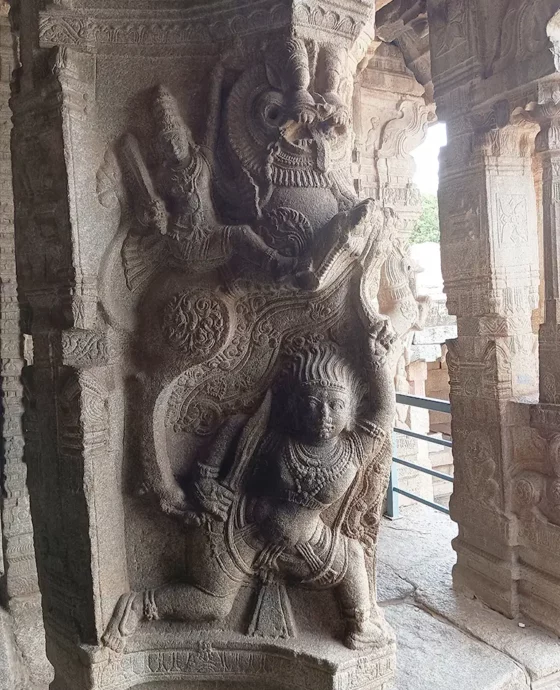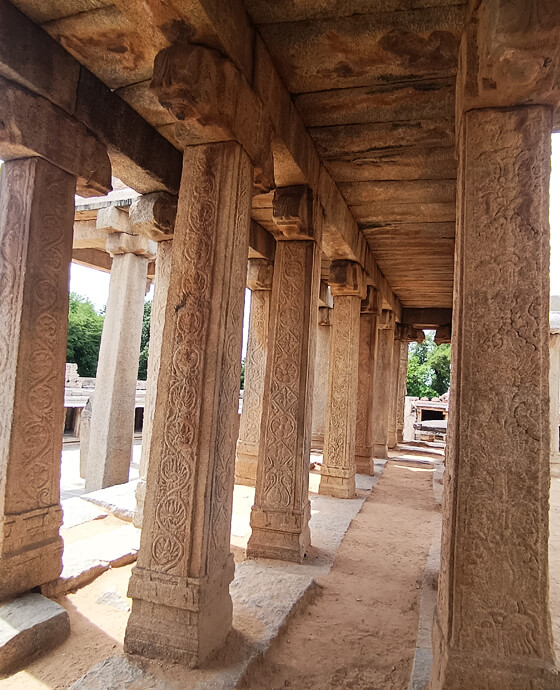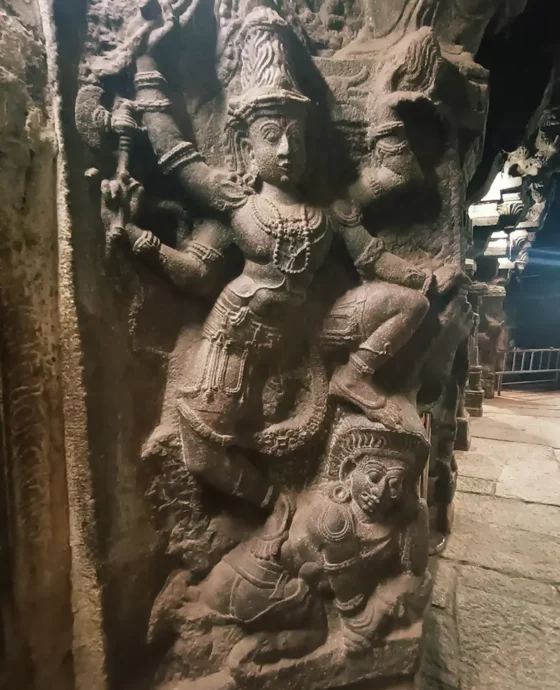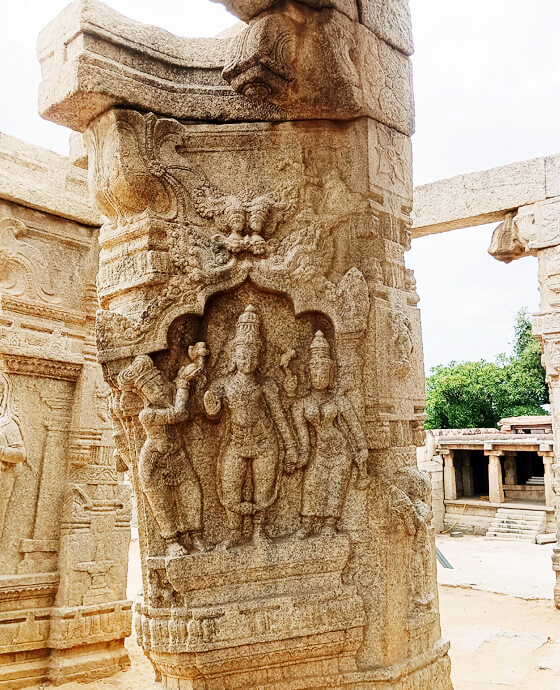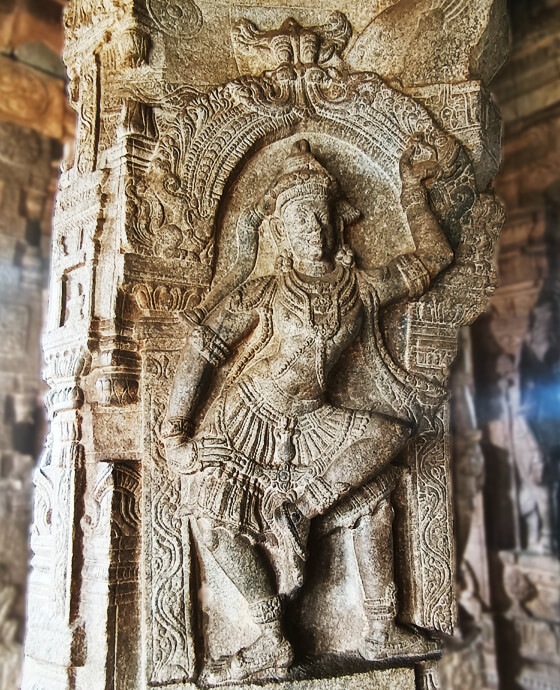Temple Sculpture
Lepakshi Temple is not just a testament to architectural brilliance but also a treasure trove of exquisite sculptures that adorn its sacred precincts. Carved with precision and devotion, these stone masterpieces breathe life into the temple’s majestic structure, allowing visitors to transcend time and immerse themselves in the artistry of ancient India.
Sculptures Adorning the Gopuras:
As you enter Lepakshi Temple through its towering gopuras, you are greeted by an array of intricate sculptures. These magnificent gateways are adorned with divine figures, celestial beings, and mythological creatures that seem to come alive through the sculptor’s chisel. Each sculpture tells a story, be it the graceful postures of celestial dancers or the fierce forms of guardian deities, leaving visitors in awe of the artistic prowess.
Pillars that Whisper Tales:
The temple’s pillars are a gallery of stories etched in stone. Carved with meticulous detail, they depict gods, goddesses, and epic narratives from Hindu mythology. These pillars are not just architectural supports; they are storytellers, narrating the tales of deities, warriors, and celestial events. Among them, the famous hanging pillar stands as a testament to the engineering marvels of the time.
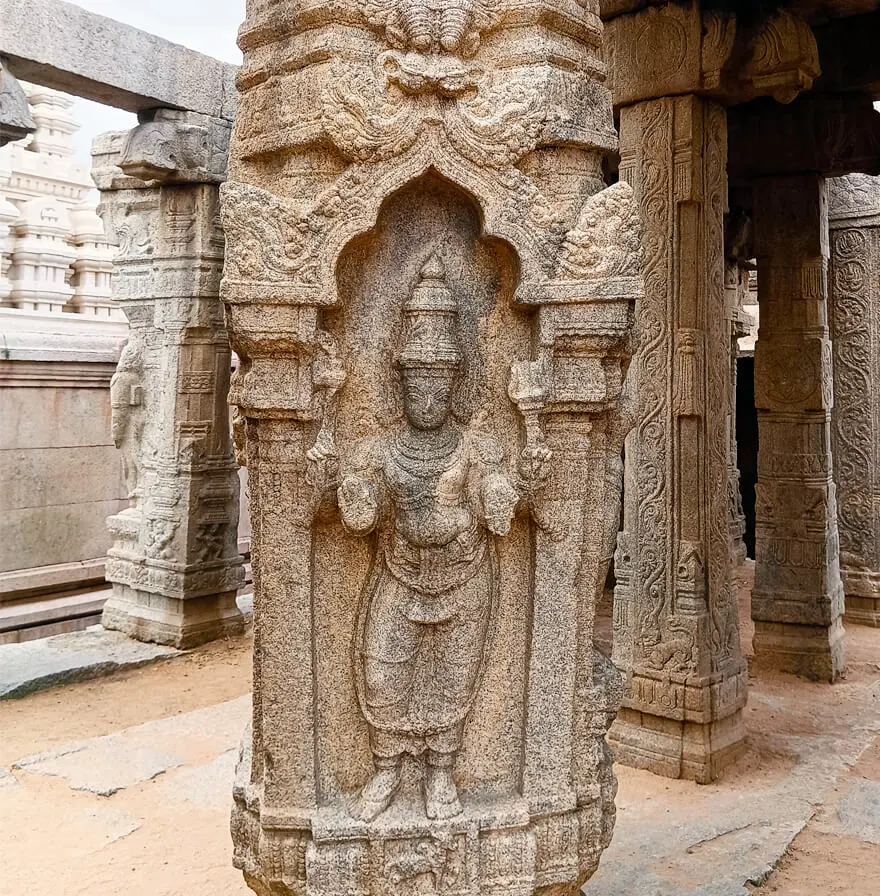
The Dance of Deities
Sculptures of Lepakshi Temple

The Dance of Deities:
The Dance of Deities:
Within the temple complex, the Natyamandapa, or the hall of dance, is a captivating space adorned with sculptures that capture the essence of movement and rhythm. The pillars here feature lifelike representations of musicians, dancers, and divine performers, showcasing the rich cultural heritage of India’s classical arts.
Divine Presence in the Garbhagrihas:
The sanctums or garbhagrihas of Lepakshi Temple house sculpted deities that invoke a sense of devotion and reverence. Each deity is meticulously crafted, with attention to every detail of their divine form. The presence of these sculptures enhances the spiritual ambiance of the temple, inviting devotees to connect with the divine.
Intricate Details and Symbolism:
What sets Lepakshi Temple’s sculptures apart is the level of intricacy and symbolism in each carving. From the smallest jewelry piece adorning a deity to the expressive eyes of a celestial figure, every element holds deeper significance. These sculptures not only serve as artistic wonders but also as a window into the profound spiritual beliefs of the time.
Preservation and Legacy:
Efforts to preserve and protect the sculptures of Lepakshi Temple are ongoing. Organizations like the Archaeological Survey of India (ASI) play a crucial role in safeguarding these timeless treasures, ensuring that future generations can continue to marvel at the artistry of the past.
The sculptures of Lepakshi Temple are not merely stone figures; they are a testament to the craftsmanship, spirituality, and cultural richness of an era long gone. As you wander through the temple’s hallowed halls, take a moment to appreciate these masterpieces in stone, for they are not just relics of the past but a living legacy of India’s artistic and spiritual heritage. Visit Lepakshi Temple to witness the dance of deities, the tales of epic heroes, and the enduring beauty of sculpted artistry.

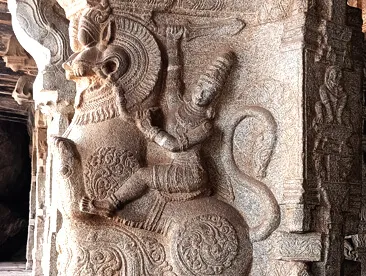
Mythological Tales on Every Pillar
The temple’s interior boasts intricately carved pillars that bear witness to the remarkable craftsmanship of the artisans of their time. These pillars, adorned with mythological motifs, stand as architectural masterpieces.
The temple’s monolithic wonders, such as the colossal Nandi statue and the enigmatic Lepakshi Footprint, capture the imagination with their sheer size and craftsmanship. These single-rock creations add a mystical dimension to the temple complex.
Lepakshi Temple is adorned with exquisite frescoes and paintings that narrate Indian mythological tales and historical epics. These well-preserved artworks offer a visual journey into the rich cultural tapestry of ancient India.


